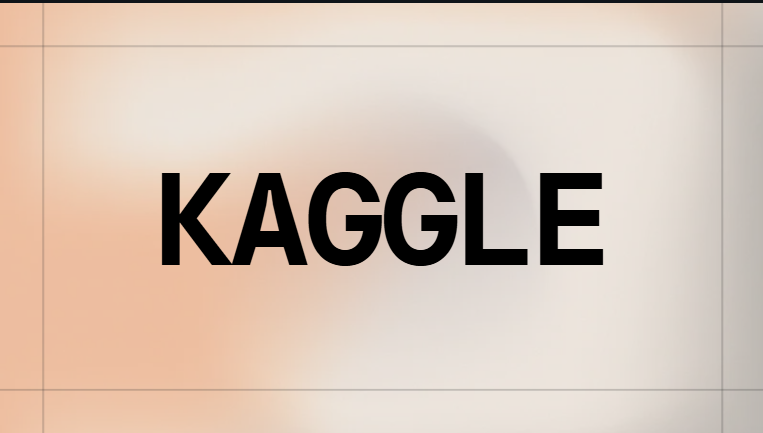Kaggle is one of the most popular online platforms for data science, artificial intelligence (AI), and machine learning (ML). It is a place where people from all over the world share data, build models, and compete in data challenges. Whether you are a beginner or a professional, Kaggle helps you learn new skills and improve your data analysis knowledge.
What Is Kaggle?
Kaggle was founded in 2010 and is now owned by Google. It provides free access to thousands of datasets, code notebooks, and online competitions. Data scientists, students, and developers use Kaggle to explore data, practice skills, and find solutions to real-world problems.
In simple words, Kaggle is like a “social network” for data scientists. You can connect with others, share your work, and learn from the community.
Why Kaggle Is So Popular
There are many reasons why Kaggle has become a key platform for data enthusiasts. Let’s look at the top ones:
- Free Learning Environment – Kaggle offers free tools and datasets for everyone. You don’t need to install any software because everything runs online.
- Real-World Practice – You can join competitions hosted by big companies like Google, Microsoft, or Netflix.
- Community Support – Millions of users share notebooks, ideas, and code that you can learn from.
- Career Growth – Many recruiters and companies look at Kaggle profiles to find talented data scientists.
How to Get Started on Kaggle
Starting on Kaggle is simple and free. Here’s how you can begin:
- Sign Up – Go to kaggle.com and create an account using your Google or email account.
- Explore Datasets – Visit the “Datasets” section and pick one that interests you. You can download or use it directly in Kaggle Notebooks.
- Use Notebooks – Kaggle provides a cloud-based coding environment where you can write Python or R code.
- Join Competitions – Choose a competition and submit your model. You’ll get a score and see how you rank against others.
- Earn Medals and Points – As you participate, you earn medals that help you build a strong Kaggle profile.
Main Features of Kaggle
Kaggle offers many helpful tools and resources for learning and practicing data science.
1. Datasets
Kaggle has over 50,000 public datasets on topics like health, finance, sports, and environment. You can use these datasets for projects, research, or learning.
2. Kaggle Notebooks
These are online coding environments where you can write and run Python or R code without installing anything. Notebooks are easy to use and great for beginners.
3. Competitions
Kaggle competitions are challenges hosted by companies or organizations. Participants solve real-world problems using data. Winners can earn money, medals, and job opportunities.
4. Courses
Kaggle Learn offers free mini-courses on data science topics such as Python, Pandas, Machine Learning, and Deep Learning. These short lessons help you learn by doing.
5. Discussions
The community forum allows you to ask questions, get help, and share ideas with other users. It’s a great way to connect and grow.
Benefits of Using Kaggle
Here are some strong reasons to use Kaggle for your data science journey:
- Free and Easy to Use – No cost, no installation, and easy access.
- Practical Learning – You learn by solving real-world problems.
- Networking – You can connect with global data experts.
- Portfolio Building – Your Kaggle profile shows your skills to future employers.
- Career Opportunities – Top Kaggle users often get hired by tech companies.
Tips to Succeed on Kaggle
To make the most of Kaggle, follow these helpful tips:
- Start Small – Begin with simple datasets or beginner competitions.
- Read Other Notebooks – Learn from experienced users by studying their code.
- Join the Community – Ask questions and take part in discussions.
- Practice Regularly – The more you code, the better you get.
- Focus on Learning – Don’t worry about winning at first; focus on improving your skills.
Kaggle for Beginners
If you’re new to data science, Kaggle is the perfect place to start. You don’t need strong coding skills right away. The free courses and community examples help you understand step by step.
Many users begin by completing the “Python” and “Intro to Machine Learning” courses. These are short, easy, and perfect for beginners.
Kaggle and Career Growth
Kaggle can play a big role in your data science career. By joining competitions and publishing your notebooks, you show your talent and creativity. Companies often hire data analysts and ML engineers who have strong Kaggle profiles.
Even if you’re a student, your Kaggle projects can serve as a great portfolio to show your practical knowledge.
Common Challenges on Kaggle
While Kaggle is amazing, beginners might face some challenges, such as:
- Understanding large datasets
- Reading complex codes in notebooks
- Managing time during competitions
- Staying motivated after tough results
But with regular practice, these problems get easier to handle.
FAQs
Q1: Is Kaggle free to use?
Yes, Kaggle is 100% free to use. You can access datasets, notebooks, and courses without paying.
Q2: Do I need coding skills to start on Kaggle?
Basic Python knowledge helps, but beginners can start with Kaggle’s free learning courses.
Q3: Can I earn money from Kaggle?
Yes. Some competitions offer cash prizes to top winners, while others offer job opportunities.
Q4: What language is used on Kaggle?
Kaggle mainly supports Python and R for data analysis and machine learning.
Q5: How can Kaggle help my career?
By building a strong profile, publishing projects, and joining competitions, you can attract recruiters and show your skills.
Conclusion
Kaggle is one of the best platforms to learn, practice, and grow in the world of data science and AI. It gives you access to real data, global competitions, and a strong community. Whether you want to learn coding, build models, or start a data science career, Kaggle is the right place to begin your journey.


